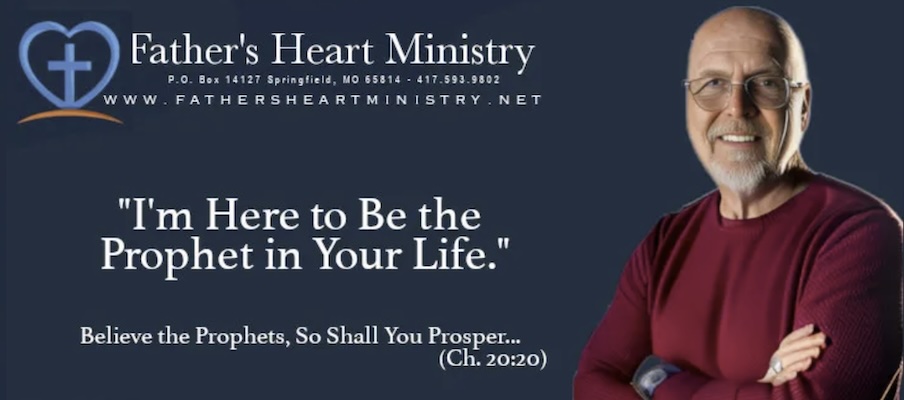Morning Light – Ezekiel 8
 Today: [Ezekiel 8] The Other Jesus. In this chapter of Ezekiel, the prophet is shown three visions of hidden idolatry in the temple at Jerusalem. Each of these visions exposes the ancient, the honorable and consecrated people of the city involved in hidden pagan ritual that point to what Paul called “another Jesus”. This same error is prevalent in modern Christian culture and gives us cause for sober reflection regarding the authenticity of our own faith toward God.
Today: [Ezekiel 8] The Other Jesus. In this chapter of Ezekiel, the prophet is shown three visions of hidden idolatry in the temple at Jerusalem. Each of these visions exposes the ancient, the honorable and consecrated people of the city involved in hidden pagan ritual that point to what Paul called “another Jesus”. This same error is prevalent in modern Christian culture and gives us cause for sober reflection regarding the authenticity of our own faith toward God.
Streaming live daily at: http://bit.ly/2luPMYU
[Eze 8:1-18 KJV] 1 And it came to pass in the sixth year, in the sixth [month], in the fifth [day] of the month, [as] I sat in mine house, and the elders of Judah sat before me, that the hand of the Lord GOD fell there upon me. 2 Then I beheld, and lo a likeness as the appearance of fire: from the appearance of his loins even downward, fire; and from his loins even upward, as the appearance of brightness, as the colour of amber. 3 And he put forth the form of an hand, and took me by a lock of mine head; and the spirit lifted me up between the earth and the heaven, and brought me in the visions of God to Jerusalem, to the door of the inner gate that looketh toward the north; where [was] the seat of the image of jealousy, which provoketh to jealousy. 4 And, behold, the glory of the God of Israel [was] there, according to the vision that I saw in the plain. 5 Then said he unto me, Son of man, lift up thine eyes now the way toward the north. So I lifted up mine eyes the way toward the north, and behold northward at the gate of the altar this image of jealousy in the entry. 6 He said furthermore unto me, Son of man, seest thou what they do? [even] the great abominations that the house of Israel committeth here, that I should go far off from my sanctuary? but turn thee yet again, [and] thou shalt see greater abominations. 7 And he brought me to the door of the court; and when I looked, behold a hole in the wall. 8 Then said he unto me, Son of man, dig now in the wall: and when I had digged in the wall, behold a door. 9 And he said unto me, Go in, and behold the wicked abominations that they do here. 10 So I went in and saw; and behold every form of creeping things, and abominable beasts, and all the idols of the house of Israel, pourtrayed upon the wall round about. 11 And there stood before them seventy men of the ancients of the house of Israel, and in the midst of them stood Jaazaniah the son of Shaphan, with every man his censer in his hand; and a thick cloud of incense went up. 12 Then said he unto me, Son of man, hast thou seen what the ancients of the house of Israel do in the dark, every man in the chambers of his imagery? for they say, The LORD seeth us not; the LORD hath forsaken the earth. 13 He said also unto me, Turn thee yet again, [and] thou shalt see greater abominations that they do. 14 Then he brought me to the door of the gate of the LORD’S house which [was] toward the north; and, behold, there sat women weeping for Tammuz. 15 Then said he unto me, Hast thou seen [this], O son of man? turn thee yet again, [and] thou shalt see greater abominations than these. 16 And he brought me into the inner court of the LORD’S house, and, behold, at the door of the temple of the LORD, between the porch and the altar, [were] about five and twenty men, with their backs toward the temple of the LORD, and their faces toward the east; and they worshipped the sun toward the east. 17 Then he said unto me, Hast thou seen [this], O son of man? Is it a light thing to the house of Judah that they commit the abominations which they commit here? for they have filled the land with violence, and have returned to provoke me to anger: and, lo, they put the branch to their nose. 18 Therefore will I also deal in fury: mine eye shall not spare, neither will I have pity: and though they cry in mine ears with a loud voice, [yet] will I not hear them.
After seeing the glory of the Lord and being instructed to carry out several prophetic acts, a fresh vision of the likeness of God in the midst of the captives in Babylon comes to Ezekiel. The elders of Judah in the land of captivity have come to visit Ezekiel, apparently by Ezekiel’s own invitation. As they sit before Ezekiel, a vision comes to him of the throne of God. It is a pattern in the visions of Ezekiel that he first sees the glory of God, the majesty of heaven and then the iniquities of the people. The same pattern is in evidence in Isaiah when he sees the Lord and his glory in the temple and then sees that he is a man of unclean lips in the midst of a people with unclean lips. The meaning for us is that God is more interested in disclosing Himself to us than declaring our sins to us. That doesn’t mean that our sins will go ignored, for they separate us from the God who is revealed in those moments of great vision, but never forget that God’s heart is first to be known and disclosed to us so that the sin that needs to be dealt with can be addressed, in the glory and not by the mere works of men.
Ezekiel sees the vision of God who has the appears of fire from his waist upward and from his waist downward. Before there can be any reaction on Ezekiel’s part a hand comes forth out of this appearance of flame and glory and picks him up by a lock of his hair. He is suspended between heaven and earth as he is carried by this now disembodied hand from Babylon to the inner gate of the city of Jerusalem that looked toward the north. The northerly direction is important because Jer. 6:22 tells us God comes from the north, and Psa. 48:2 declares that God judges and rules the earth in the sides of the north. In the encampments of the people in the wilderness, the tribe of Dan camped on the north side of the tabernacle. Jacob declared Gen. 49:6 that the tribe of Dan would sit as a judge over the people of God.
In this vision from the north Ezekiel is brought to the door of the outer court and in verse 8 told to dig into the wall to expose a door. This is very interesting because this door where Ezekiel is commanded to dig is at the door that represents Jesus. In John 10 Jesus declared:
[Jhn 10:7-8 KJV] 7 Then said Jesus unto them again, Verily, verily, I say unto you, I am the door of the sheep. 8 All that ever came before me are thieves and robbers: but the sheep did not hear them.
What Ezekiel is uncovering is another door, hidden at the door that is Christ. This is the door that Jesus described where thieves and robbers have purposed to enter. When Ezekiel enters here, he sees 70 elders of the city committing every form of abomination below the foundation of the temple. He further sees a chamber within which was seen a complete collection of all the pagan images and altars that the people of God had defiled themselves with in her history. As Ezekiel watches, one of the appointed priests in Zedekiah’s day gathered the elders together to burn incense before these idols in a thick cloud of smoke.
God speaks to Ezekiel and gives an explanation that has meaning for us. Think of the defilement of the house of God in this vision. The metaphors employed have direct application not only for the Old Testament believers but for us as well. We are the temple, the church is the sanctuary. Each of us are called as priests unto God. Jesus is the door. Paul warned about the people following “another Jesus” (2 Cor. 11:4) or another door through which idolatry and false worship of God is allowable and engendered. The implications for us of applying this vision to modern Christian culture are very sobering.
In verse 14 God takes Ezekiel from the scene of these elders in disobedience and shows him the women of Jerusalem weeping for Tammuz. Tammuz was a Sumerian shepherd-god worshipped in ancient Babylon at the time. Here again is the picture of another Jesus. Jesus is the true shepherd of John 10 but the warning for us is of another Jesus, also a shepherd masquerading as our savior. The only characteristic revealed about this Tammuz is that he brought forth mourning and was worshipped in pagan rites of mock sorrow and despondency. How many times have we seen believers whose character was anything but demonstrative of the peace and joy of the kingdom. This is more than just a people who need to cheer up. God says when we turn the faith of the kingdom into a mirthless religion we are in fact not worshipping Jesus at all, but another Jesus, the Tammuz of ancient Babylon.
Finally, God takes Ezekiel to the inner court of the temple where 25 men are seen with their backs to the ark of the covenant and their faces worshipping toward the east. This is interesting because it is the number of the 24 elders, plus one. The Babylonian sun god was known as Shamesh, or Utu. Shamesh was seen as the great lawgiver of the Sumerian religion. We see this in first century Judaism that rejected Christ. He was the light but they were worshipping the sun which contained the Light of who Jesus was. Jesus told the Pharisees that while they loved the scriptures, they failed to realize that all their scriptures pointed to Him. Today, Christian culture champions legalistic ideas of serving God as though God can only be satisfied with offerings up of our lives according to moral codes that have been added to our faith. This is the 25th elder – Christ PLUS religious legalism. We are shown in the metaphor of the 3rd vision that this results in people turning their backs on the God they claim to serve. Because of these things verse 18 declares that God will show His fury on these three groups of people, who in feigned worship to God are in fact not worshipping Him at all.
Discover more from Fathers Heart Ministry
Subscribe to get the latest posts sent to your email.

